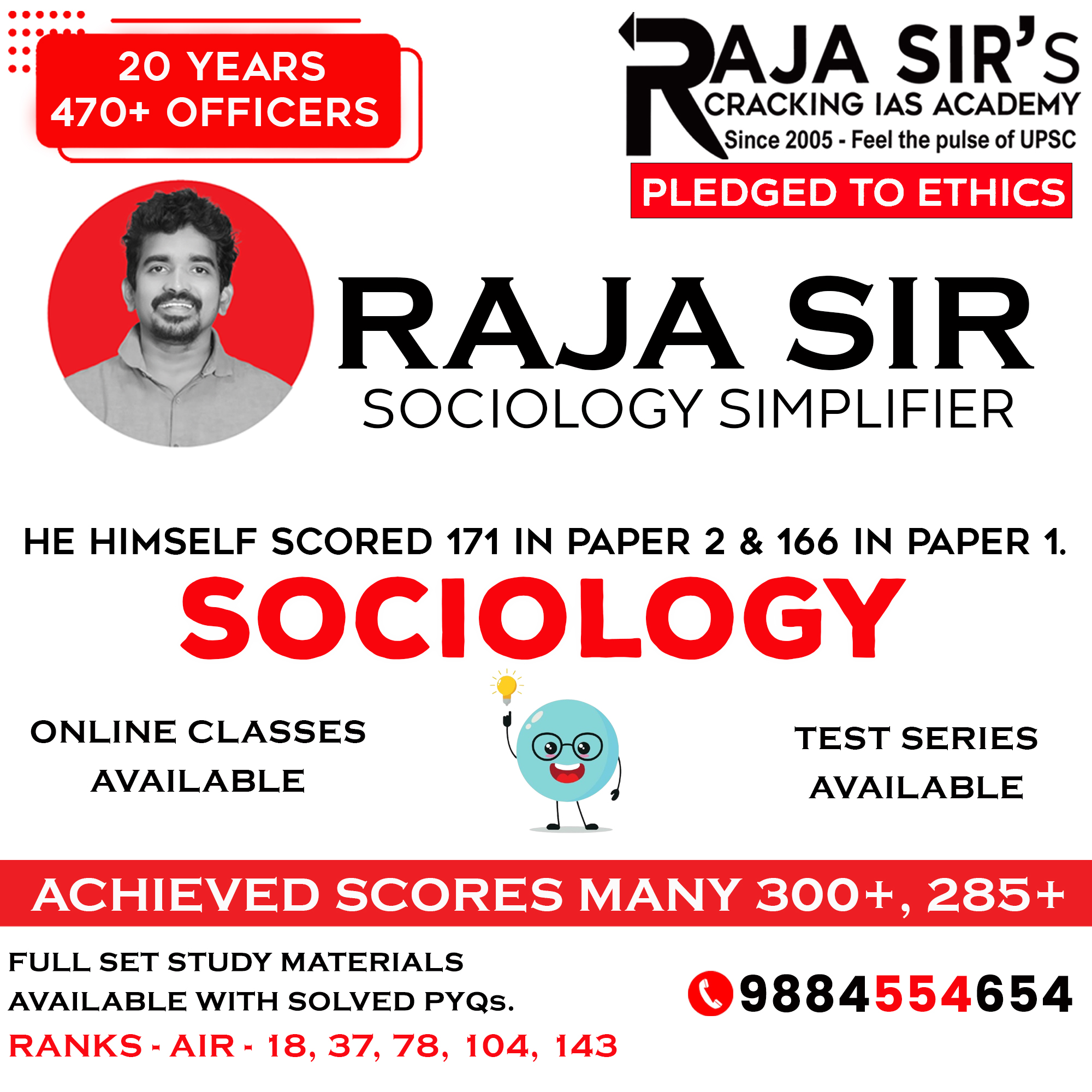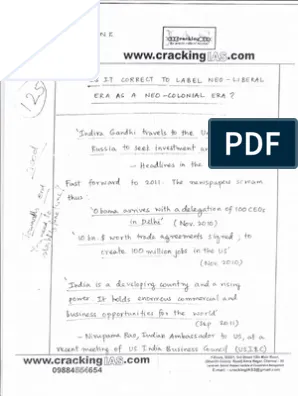- Home
- Prelims
- Mains
- Current Affairs
- Study Materials
- Test Series
Discuss the changing nature of political political elites in India.. 10 Marks (UPSC CSE Mains 2024 - Sociology, Paper 2)
‘Political Elite’ maybe defined as “a group of high stratum decision-makers in political culture or concrete political structure which monopolizes political power, influences major political policies and occupies all important posts of political command”.
GET OUR FULL SET STUDY MATERIALS FOR SOCIOLOGY Optional Paper @ https://crackingiasbooks.com/product/sociology-full-set-4-volumes/
According to Ram Ahuja growth of political elite can be analyzed in different phases.
- Immediately after independence phase i.e.,1947 to April 1952, in which there was no longer any struggle between the people and the government and in which though the interests of the people and the power elite were one and indivisible (i.e., rebuilding the society),the latter were more preoccupied with the problems of restoration of law and order after partition, refuge resettlement, maintenance of communal peace, and the controversy over the redistribution of territories between various states.
- Consolidation phase (i.e., April 1952 to March 1962 or MPs, MLAs and party office-holders elected in April 1952 and April 1957 elections), in which the political elite worked for the economic uplift and social development through the Five Year Plans.
- Chaotic phase i.e., April 1962 to March 1971or individuals elected in April 1962 and March 1967 elections, in which non-congress and coalition governments came into power in several states affecting its interstate and state-centre relations.
- Authoritarian phase (i.e., March 1971 to November 1989 or individuals elected in March 1971, March 1977, January 1980, December 1984, and November 1989 elections) in which one person was catapulted to the position of supreme national leadership, first Indira Gandhi for 16 years (excluding period from march 1977 to January 1980) and then Rajiv Gandhi for five years and the power-holders came to believe in the personality cult, and in which all plans for change and development of society were centralized.
- Multiple-party phase i.e., December 1989 till April 1999 in which except in Narsimha Rao’s period multiple hands to rule the country on a common programme basis (V.P. Singh ministry for llmonths, Chandra Shekhar ministry for about eight months, Atal Bihari Vajpayee ministry for 13 days. United Front governments of Deve Gowda for 11 months and I.K. Gujral for one year and BJP led government of A.B. Vajpayee).
The movement of political parties in the ideological space marked the transition from the Congress-dominant system to a multi-party competition, and now to BJP’s one-party dominance. India has witnessed at least five waves of party formation. The continuous churn in India''s diverse set-up will continue to produce opposing tendencies and ensure the democratic balance of our system.










 Latest News
Latest News
 General Studies
General Studies